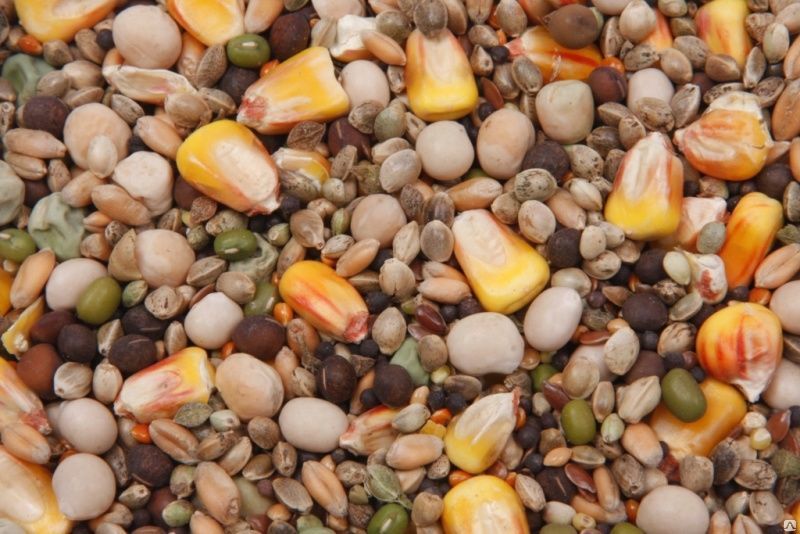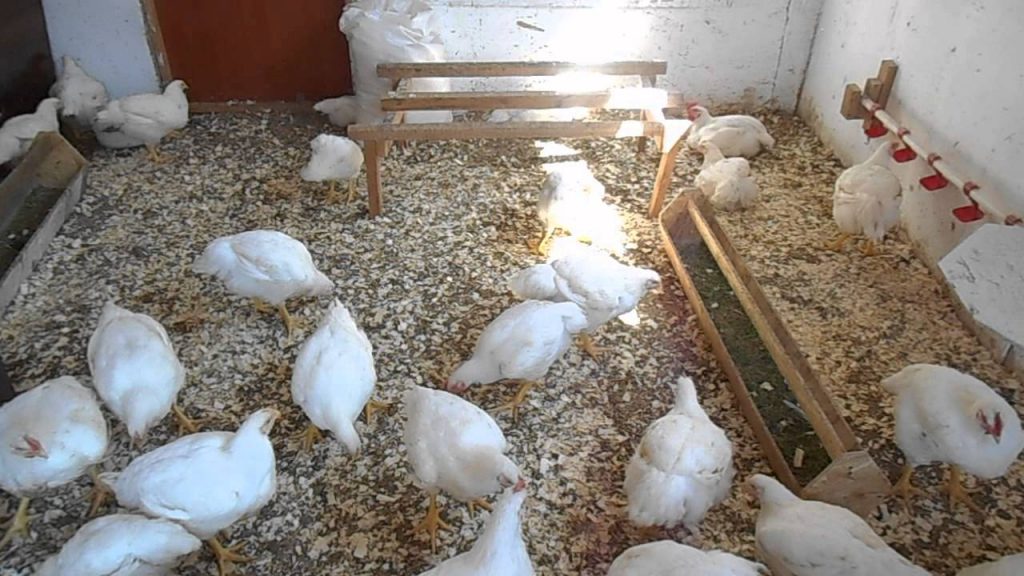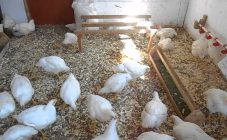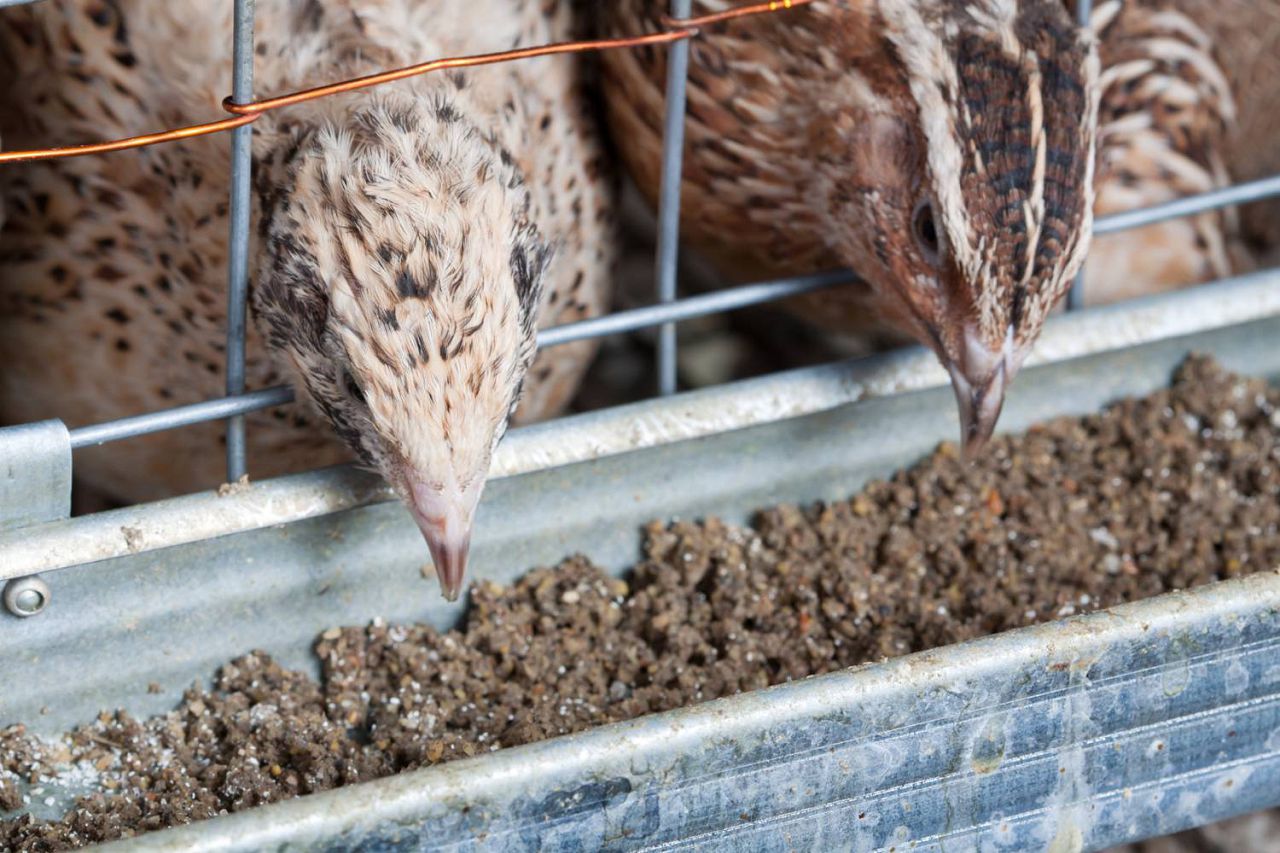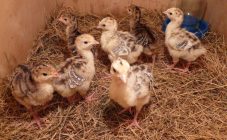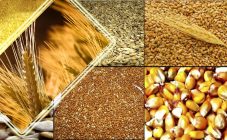Content:
Experts believe that the most important thing in keeping broilers is the first month of their life. If the young animals receive all the necessary substances, this will ensure full-fledged intensive growth. Feeding broilers in 1 month requires following several rules.
Characteristics of broiler chickens
The health of birds depends on the choice of diet, and the growth of mass depends on a special program of intensive weight gain. Many unknowingly classify broilers as a separate breed, but there are several varieties of them that differ in productivity and requirements for keeping conditions.
Broilers are bred in England as a result of crossing different meat breeds (mainly Plymouthrock and Cournish). Experiments to develop new productive hybrids continue to this day.
Key features of broiler chicks:
- rapid development and growth;
- increased body weight;
- endurance;
- resistance to disease.
Productive broiler breeds
Popular early maturing hybrids include the following breeds of domestic chickens:
- Change. Chickens of this breed were bred at the plant of the same name. Feature - rapid growth. Every day, the individual adds 50 grams of mass, has excellent taste characteristics of meat, the probability of survival of chickens is 97%.
- Cross Hybro-6. Description: excellent survival rate of young stock, tasty meat, high egg production of laying hens - 160 eggs per year.
- Broiler-61. Characteristics: consistently intensive weight gain with minimal feed consumption, high egg production in layers, good survival rate of the young.
- Broiler-M. Feature: high egg production - 165 eggs per year. The compact size of the individuals allows them to be kept in small rooms.
- Cobb-500. Description: high survival rates, suitable for home maintenance.
- Ross-308. Feature: rapid growth - the individual adds 60 grams of weight per day, suitable for breeding at home.
- Cross Ross-708. The newly bred breed is characterized by active weight gain - in 30 days a chick can reach 2.9 kg of weight. A large percentage of the survival rate of young animals.
Broilers monthly: how to feed chickens
As the chick grows up, the daily frequency of its feeding is revised. From 0 to 7 days, the chicks are fed 8 times, from 8 to 14 days the chicks are transferred to six meals a day, from the 15th day they are given food 4 times a day, from the 21st day they are fed 2 times.
Growth rates and feed quantity for broilers up to one month:
- from 0 to 5 days, the daily growth rate is 15 grams, the chicken should consume 15-21 grams of feed daily;
- from 6 to 18 days, the increase is 33 grams, feed consumption increases to 25-89 grams;
- from 19 to 37 days, the daily growth rate is 54 g, feed consumption is 93-128 g.
Chicks diet
Successful poultry farming depends on choosing the right products. What do experienced farmers feed broilers in 1 month for fast growth? To feed birds, the following foods are needed:
- from 0 to 5 days, the diet of chicks includes millet, oatmeal, crushed wheat, barley, oats and boiled eggs;
- from day 5 feed chickens with finely chopped greens (leaves of radish, plantain, nettle (5 grams per day), as well as cottage cheese, yogurt and milk;
- after the first week of life, grated pumpkin or carrots are added to the feed of the young;
- from day 20, 20% of millet is replaced by boiled potatoes. Chicks are recommended to be fed with a mash of broth or yogurt with the inclusion of bread yeast and fresh fish;
- upon reaching 30 days of age, the chickens are transferred to whole grains.
It is possible to eliminate the likelihood of a shortage of useful minerals if chalk, coarse river sand and shells are used in addition to the main diet.
Feed structure
Food for newborn chicken should be minced and grind as follows:
- from 0 to 10 days, the chicken is fed with sifted crumbs or microgranules;
- from day 11, the diet includes a scatter of coarse grinding or granules with a size of 2-3.5 mm;
- from day 25, the diameter of the granules is increased to 3.5 mm.
There is a range of products that are not suitable for feeding monthly broilers at home. Experts recommend avoiding adding beets to chicks. You also need to pay special attention when choosing fish - it should be fresh and twisted in a meat grinder. Stale food is dangerous for chick.
Upon reaching 30 days of age, broilers are transferred to cages with a walk. The feeders are set so that the chicks are not crowded during feeding. Since birds are thermophilic, it is necessary to turn on the red lamp for heating at night.
Feeding errors
You do not need to keep the young in the chicken coop for a long time. Upon reaching a two-month period, growth activity decreases, while the individual begins to consume a large amount of food. In this case, it is rational to send the chicken for slaughter.
Novice farmers should first decide on the broiler breed, since the conditions of its maintenance will depend on this. How to feed monthly broilers at home, how much compound feed to give and what additives to use depends on the owner himself, however, for the health of the chicks, it is important to observe proportions and exclude harmful products from the diet.


